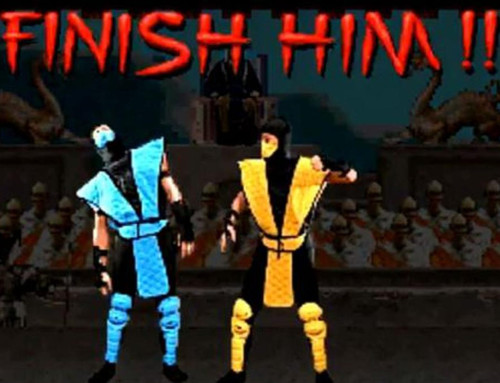If you’ve been training in martial arts anytime from the 1990’s or later, you’ve undoubtably heard that ninety percent of fights end up on the ground. I was primarily training in Hapkido back in the nineties. We did a good number of defenses from the ground in that art. It made sense to me, and I even began parroting that statement. I had no idea where it came from, nor did I have any stats or case studies to back it up. But I had confidence in it. And if I’ve learned anything from our politicians, confidence in your statements outweigh the truth! Right?
Over the years, I’ve thought back to the fights and altercations I’ve been in. Only once did it end up on the ground, and the fight ended as soon as it hit the ground. Talking to friends and students, a similar response was given. Virtually no one was ending up on the ground. Are my friends and I statistical anomalies? I had to try and find where this statement came from and try and find any case studies I could find.
The most likely person this statement is attributed to is Rorion Gracie of the famed Gracie family that made Brazilian Jiu-jitsu (BJJ) popular. This makes a lot of sense to me as I was a big fan of the Gracie family, their skills, and their art of BJJ. Being a Hapkido practitioner that focuses on grappling, joint locks, throws and ground defense, we cheered on Royce Gracie in those early UFC/MMA pay per view fights. There is a great chance that I heard the “90% of fights end up on the ground” statement around this time.
But where did he get that statistic? There was a study compiled by Sergeant Dossey, a review of LAPD use of force incidents, looking at police altercations of the LAPD from 1988. It was a brief breakdown of how altercations during arrests went down. It was listed that sixty-two percent of altercations with a subject went to the ground during an arrest. However, that doesn’t quite paint an appropriate picture. Where do many arrests get made when a subject fights back? On the ground. When the subject was apprehended, the officer placed them on the ground to make the arrest.
Note that does not mean that no altercations involved fighting on the ground. They did. But the study didn’t break that information down at the time. Another, more detailed, study was conducted in 2003 for Calibre Press along with PPCT Management Systems. This study provided more information on why an altercation ended up on the ground. This study demonstrated that fifty percent of altercations ended up on the ground. And of that fifty percent, sixty-four percent involved a continued fight with the subject. Thirty-one percent of subjects fled the scene.
The result, based on this 2003 study, is that thirty-two percent of fights end up on the ground with intent to continue the fight while on the ground. That is a far cry from the ninety percent that we hear about. It’s important to note that this is all related to altercations with law enforcement. Unfortunately trying to get case studies and statistics from civilian altercations is quite difficult. Many altercations simply aren’t reported. If Rorion Gracie was referencing the Dossey study, then where did the ninety percent come from? There was no mention of ninety percent in that study. I have two thoughts about this. First, he may have just inflated the number in an effort to promote his family’s art of BJJ. BJJ is heavily based in ground fighting. And if one believes that ninety percent of altercations end up on the ground, then it seems obvious that one should train in BJJ to defend themselves. This could be the reason for the false statement. But there could be another reason.
If you trained solely in an art that takes opponents to the ground and fight while down there. And you set up fights around the world to showcase your art against arts that are based in stand up, what percentage of the time would you be able to take your opponent to the ground in those fights? How about, ninety percent? I believe both of these factors created this false statement. I believe Rorion recognized that nearly every fight he was in went to the ground, as that is what he was trained to do. Couple that with a quick look at a general study that states a large majority of LAPD officers take subjects to the ground for an arrest, you convince yourself that ninety percent is accurate. It’s just my opinion but this is my best guess on this number. But what is a more accurate percentage?
A google search regarding all of this will send your head spinning with all different kinds of statistics. Some will still cling on to that ninety percent. Some will say eighty, seventy, sixty, all the way down to fifteen percent. Many of these “case studies” involve a YouTube search of street fights. Unfortunately, this has a biased nature to it as it depends on what search terms are used and the algorithms involved in which videos you get presented with.
Also keep in mind how difficult it would be to decide on what would be considered “going to the ground”. If one person knocks out the other person in a standing fight and that person falls to the ground, does that count? What if there are multiple people involved in the attack and one of the eight people falls to the ground and grabs or kicks someone from the ground. Does that count? You can begin to see just how difficult it would be to come up with a clear percentage.
With that said, I don’t believe we can really set a percentage to this statement. Add in the fact that the popularity of BJJ and MMA has led more people to train more ground fighting, leading to more purposeful takedowns being used in self-defense. As well as untrained fighters who have seen moves used on the ground and attempting to mimic those moves in a fight. It’s in my opinion that whatever the percentage used to be, it’s now higher than it was pre-1990’s.
I will say, and this is purely anecdotally based on personal experiences and friends’ experiences, is that most fights do not go to the ground. But some do. And again, purely anecdotally, the person that takes the other person down generally has the advantage. Assuming no weapons are involved. With all of that said, it doesn’t really matter. Whether ninety percent of altercations end up on the ground or thirty or less, is irrelevant. Any martial arts that are taught for self-defense reasons should have techniques from all positions. Standing, ground, front, behind, empty hand, weapon, multiple attackers, rough environments, and so on.
Where this false percentage has an effect, is on those who believe that learning an art that is mostly spent on the ground is all that is needed. This can lead to dangerous situations and false sense of security. Especially in law enforcement or professions that carry a weapon. Allowing a subject/attacker to take you down in this profession allows them much easier access to your own weapons to be used against you. It also disguises the use of their weapons. Ground fighting suddenly becomes a deadly decision in these instances.







Great article! I always wondered about this.
It’s really a nice and helful puece of info. I amm glad that you just
shared this usefull info with us. Please keep us informed like
this. Thanks for sharing.